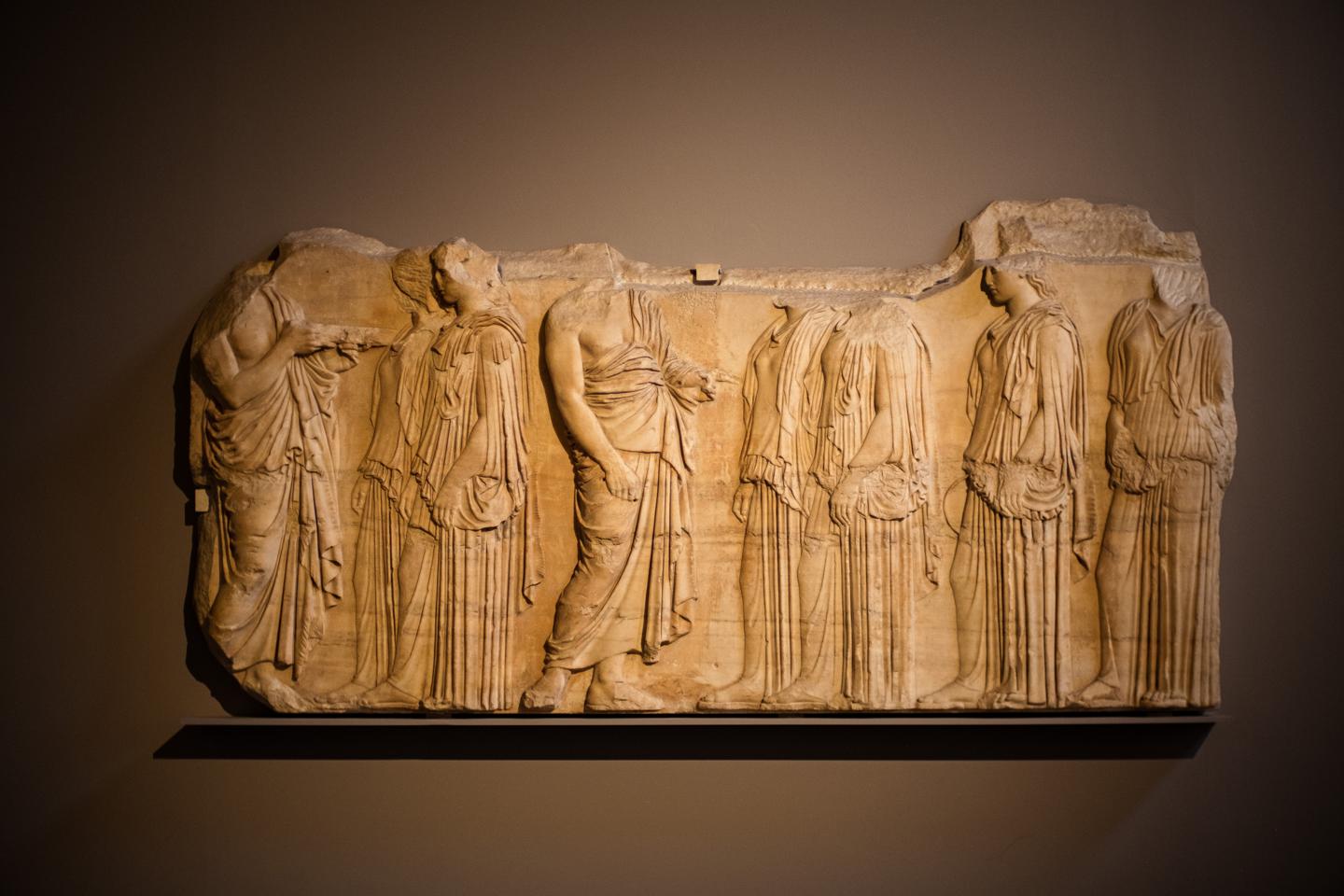Parthenon Friezes

Plate from the Parthenon Frieze, c. 440, B.C.
This work is often being repaired or goes unnoticed. The scene is a fragment of a decorative panel of the Parthenon that tells the story of the temple, why it was built and for whom. Following the Persian invasions and the destruction of many Greek temples, the Parthenon was commissioned and Phidias was appointed the chief coordinator and sculptor of its facade. The frieze that once adorned the temple represents 360 figures participating in the great festival Panathenaea!
Much of the frieze can be seen in the British Museum in London, but the theme of this plaque is directly related to Athena and the raison d'être of the temple.
It gives way to the celebration of Athens after a period of social and political upheaval. The six girls that are observed, are nobles known as Ergastinas and wear tunics (called peplos) that were hand woven for the goddess. Unfortunately, due to deterioration over the ages, we can no longer see their faces. The figures are not all represented in profile. They show different positions and convey a definite sense of movement. Their dresses fall in folds. Classic sculptors liked to create fluid forms, emphasizing the effect of natural grace.
Like the Venus de Milo and the Winged Victory, the decorative reliefs of the Parthenon would not have looked like this in the 5th century BC. They would have been painted in rich colours, perhaps deep blue for the background and gold for the dresses. It was almost certain that the characters also had metal objects accessories.
© ChatGPT 3.5